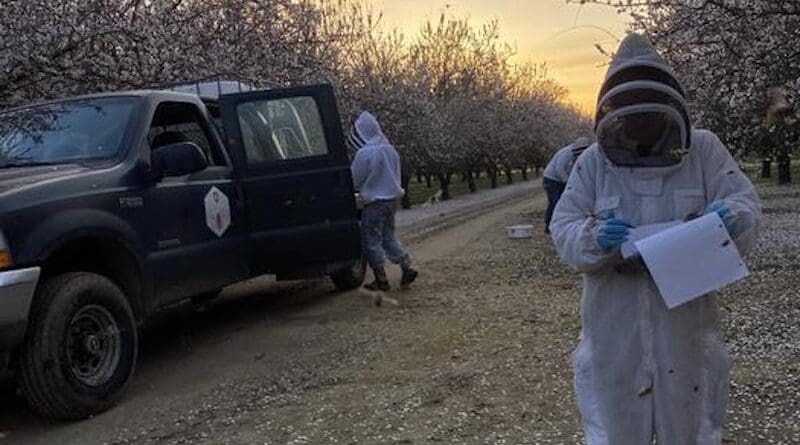Honey Bees At Risk For Colony Collapse From Longer, Warmer Fall Seasons
The famous work ethic of honey bees might spell disaster for these busy crop pollinators as the climate warms, new research indicates.
Flying shortens the lives of bees, and worker honey bees will fly to find flowers whenever the weather is right, regardless of how much honey is already in the hive. Using climate and bee population models, researchers found that increasingly long autumns with good flying weather for bees raises the likelihood of colony collapse in the spring.
The study, published in Scientific Reports, focused on the Pacific Northwest but holds implications for hives across the U.S. The researchers also modeled a promising mitigation: putting colonies into indoor cold storage, so honey bees will cluster in their hive before too many workers wear out.
“This is a case where a small amount of warming, even in the near future, will make a big impact on honey bees,” said lead author Kirti Rajagopalan, a Washington State University climate researcher. “It’s not like this is something that can be expected 80 years from now. It is a more immediate impact that needs to be planned for.”
For this study, researchers ran simulations through a honey bee population dynamics model using climate projections for 2050 and the end of the century at 2100. They found that honey bee colonies that spend the winter outside in many areas of the Pacific Northwest would likely experience spring colony collapses in both the near- and long-term scenarios. This also occurred under a simulation where climate change continued as it is progressing now and one where greenhouse gas emissions were reduced in the near future.
Worker honey bees will forage for food whenever temperatures rise above about 50 degrees Fahrenheit. When it gets colder, they cluster in the hive, huddling with other bees, eating honey reserves and shivering, which helps keep the bees warm. In the spring, the adult worker bees start flying again. That means they also start dying. If too many older worker bees die before their replacements emerge ready to forage, the whole colony can collapse. Scientists have estimated this happens when there are fewer than 5,000 to 9,000 adult bees in the hive.
This study found that colonies wintering outside in colder areas like Omak in the far north of Washington state might still do all right under climate change. But for honey bee colonies in many other places, like Richland, Washington near the border of Oregon, staying outside in the winter would mean the spring hive population would plummet to fewer than 9,000 adults by 2050 and less than 5,000 by the end of the century.
The authors note that the simulations just looked at seasonal factors like temperature, wind and the amount of daylight, making them fairly conservative models.
“Our simulations are showing that even if there is no nutritional stress, no pathogens, no pesticides – just the conditions in fall and winter are enough to compromise the age structure of a colony. So when the hive comes out of winter, the bees are dying faster than they’re being born,” said co-author Gloria DeGrandi-Hoffman, a research leader at the U.S. Department of Agriculture’s Carl Hayden Bee Research Center.
The researchers also simulated a potential mitigation, placing honey bee hive boxes in cold storage so the bees start to cluster earlier and save workers. For instance, in the Richland scenarios, by the end of the century, having bees in cold storage from October to April would boost the spring hive population to over 15,000 compared to around 5,000 to 8,000 if they were kept outside.
A relatively new practice, cold storage is gaining popularity among commercial beekeepers to help manage bee health and for the logistics involved in moving hives to California to pollinate almond trees in February, an event that draws more than two million hives from across the country.
“A lot of beekeepers are already practicing this management technique of storing bees indoors because it has a lot of immediate potential to help in a number of ways,” said co-author Brandon Hopkins, a WSU entomologist. “These findings demonstrate that there are additional benefits to this practice for the survival of colonies in a changing climate.”
This research received support from the Washington Department of Agriculture’s Specialty Crop Block Grant.

